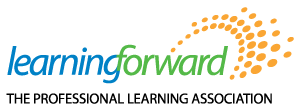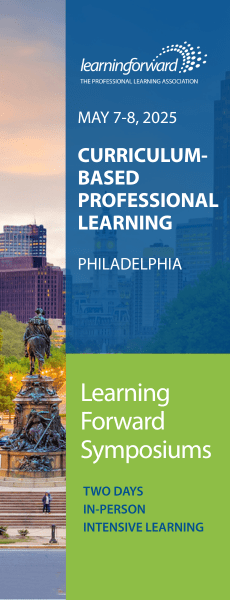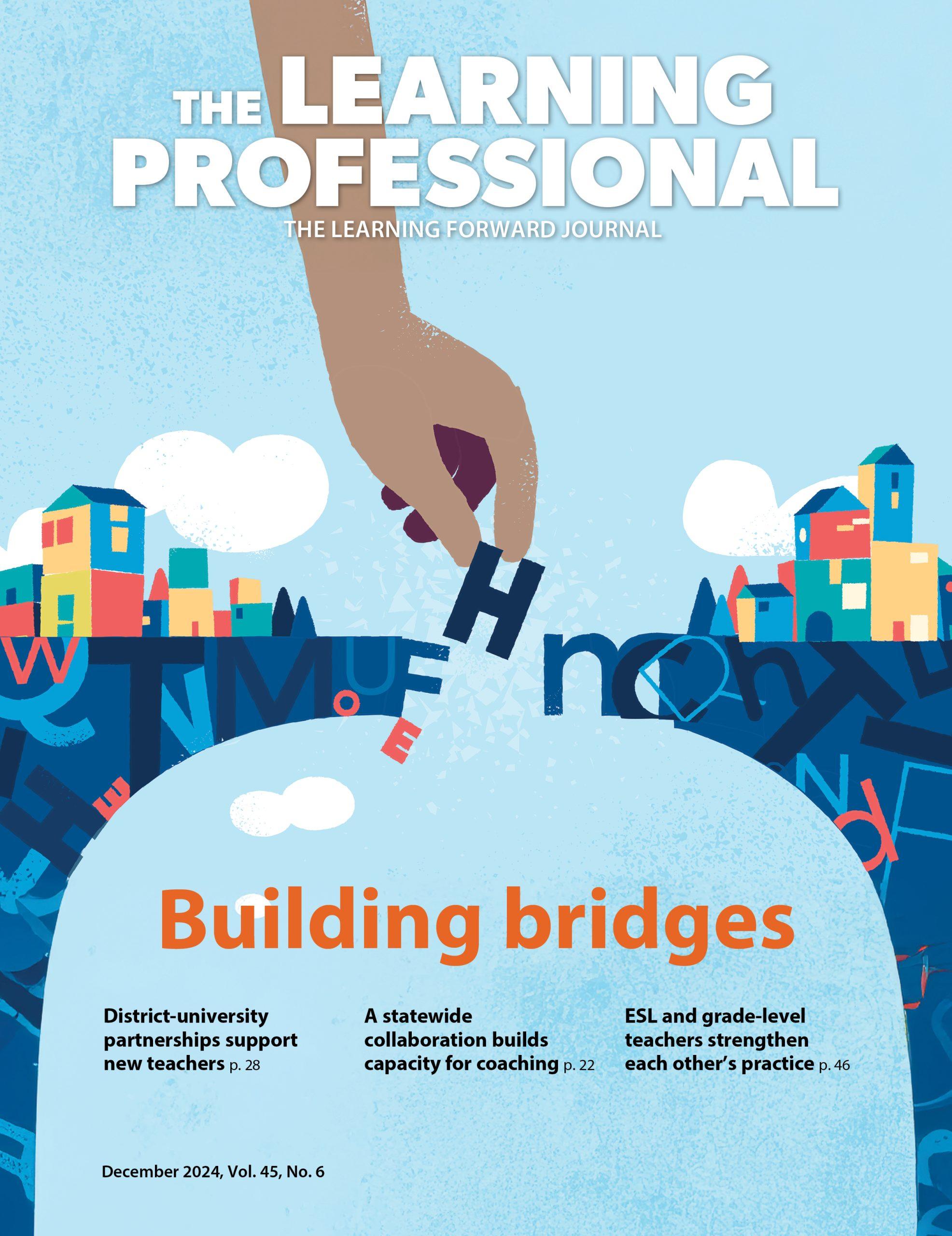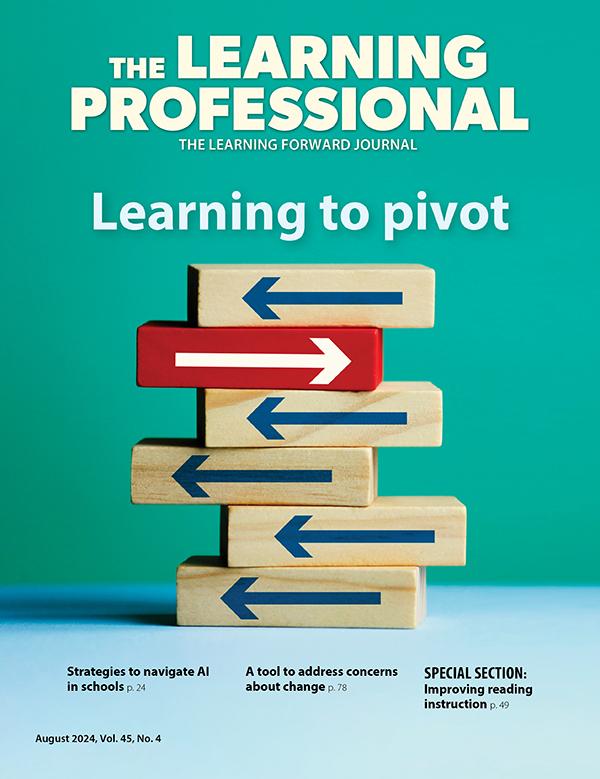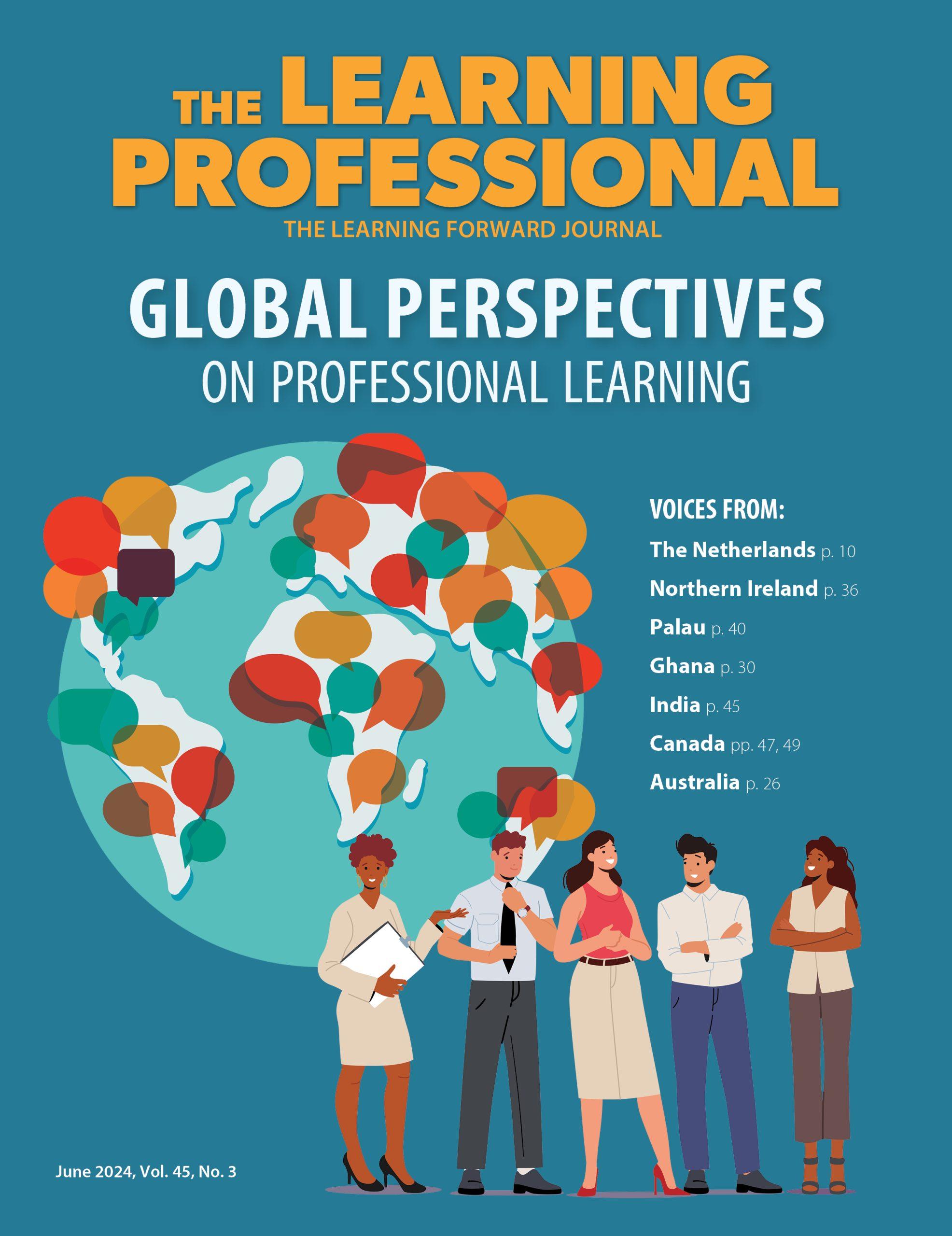FOCUS
To make SEL stick, align school and out-of-school time
By Suzanne Bouffard
Categories: Collaboration, Social & emotional learningAugust 2021
For 20 years, Prime Time Palm Beach County, a nonprofit organization in Florida, has supported local out-of-school time programs with professional learning, capacity building, and other resources. One of the organization’s most popular and longest-running professional learning offerings is called Bringing Yourself to Work, which helps out-of-school time practitioners develop self-awareness, understand and facilitate positive group dynamics, and strengthen their relationship-building strategies.
Those are key social and emotional learning (SEL) skills that out-of-school time programs typically strive to foster in the young people they serve. Prime Time leaders believe you must foster the skills in adults first. As Katherine Gopie, the organization’s director of professional development, puts it, “Adults have to first understand what SEL is, then they have to embody it, then they can model it.”
''Adults have to first understand what SEL is, then they have to embody it, then they can model it.'' — Katherine Gopie #TheLearningPro Share on XThat approach resonates with Kristen Rulison, social and emotional learning manager for the School District of Palm Beach County. Rulison develops and oversees the district’s approach to SEL and works with Prime Time to ensure that elementary students experience a consistent approach across the school day and out-of-school time hours. Like Gopie, she believes that starts with adults’ skills.
In 2017, when Rulison began developing an SEL professional learning plan for a group of elementary schools, she kept hearing about Bringing Yourself to Work from community partners. She brought it to the schools as the first professional learning offered to school staff. It fit nicely with two of the core components in a framework of five SEL competencies from the Collaborative for Academic, Social, And Emotional Learning (CASEL): self-awareness and self-management. (The other three are social awareness, relationship skills, and responsible decision-making.) Focusing on those skills, Rulison says, helps staff focus on “being the best you” for students.
Prime Time and the School District of Palm Beach County aren’t the only organizations focusing on professional learning to develop adults’ SEL skills. That strategy is one of the themes emerging from a study of six communities working to foster SEL across school and out-of-school time settings.
The Partnerships for Social and Emotional Learning Initiative, supported by The Wallace Foundation, is a six-year effort to prioritize social and emotional learning in Boston, Dallas, Denver, Palm Beach County, Tacoma, and Tulsa. The initiative focuses on simultaneously building capacity in schools and out-of-school time programs.
Team members from two of the participating communities — Palm Beach County, Florida, and Tulsa, Oklahoma — spoke with The Learning Professional to share what they’ve learned during the first half of the grant period. Although they take slightly different approaches, both communities are committed to professional learning for adults as the backbone of improving practice and student outcomes.
Their insights complement the findings of an October 2020 interim report by RAND, the project evaluator. Both communities are encouraged by the growth they see in staff and students. In fact, leaders in Tulsa are so pleased with the changes at their district’s pilot sites that they are expanding the SEL supports to all elementary schools in the district.
WHY SEL PARTNERSHIPS?
SEL, which includes skills and capacities such as empathy, self-regulation, and conflict resolution, is a key element of success in school and life, according to decades of research (Jones & Kahn, 2017). It develops in all of the places where children and youth spend their time, not just at home, but also in school, after-school, and community settings (Durlak et al., 2015).
''SEL, which includes skills and capacities such as empathy, self-regulation, and conflict resolution, is a key element of success in school and life, according to decades of research.'' #TheLearningPro Share on XResearch suggests that students benefit when all of those settings take a consistent approach to fostering SEL (Jones et al., 2018; Jones & Bouffard, 2012), just as children’s literacy skills improve when they read not only at school but also at home, on the bus, at the laundromat, and everywhere they go.
Schools and out-of-school time programs can build that consistency. They share students and often the same physical space. Rulison describes out-of-school time as “a continuation of the school day experience” for many students and says, “The more we can align those experiences, the more positive experience school will be for students.”
School and out-of-school time also offer complementary skill sets and resources from which each can benefit. “SEL has always been a focal point for us in the OST space,” says Prime Time’s Gopie, because it “dovetails with positive youth development practice, which is the grounding for much of our work.” Schools often have more infrastructure for professional learning and access to financial and human capital, as well as expertise about student learning and curriculum.
The Partnerships for Social and Emotional Learning Initiative is based on the idea of combining those strengths to weave a tight net of SEL supports for students. The project provides financial support, technical assistance from national experts, and facilitated networking among the six communities to help educators across settings use consistent SEL language, messaging, and strategies.
In each community, the school district and an out-of-school time intermediary organization lead the partnership, working together to create consistency across five to seven elementary school sites with co-located out-of-school time programs. A research study is underway to determine if the initiative results in better implementation of SEL practices and whether students benefit.
Although the six participating communities vary in their structure, needs, and approaches, all are focused on the following four elements, which they are developing in a staged way:
- Create a positive climate in school and out-of-school time programs (including welcoming physical space, supportive culture, positive norms, goals, and values);
- Offer SEL-specific instruction to students;
- Integrate SEL into academic instruction and enrichment activities; and
- Create consistent and mutually reinforcing SEL practices.
PROFESSIONAL LEARNING
Professional learning is a major focus of the initiative. It is prioritized at every level, from the technical assistance provided to participating communities (see table above), to each site’s ongoing support for leaders’ SEL capacity, to professional learning for frontline staff. After two years, some key themes and lessons have emerged.
Focus on adult SEL.
Like Palm Beach County, most of the sites began their professional learning with helping adults understand SEL and build their own SEL skills (Schwartz et al., 2020). In Tulsa, Paige Kennedy, The Opportunity Project’s associate director of professional learning & quality improvement, says, “Before we talk about students, we talk about ‘what does this skill look like in myself?’ because it’s hard to teach a skill to students that you don’t have.”
She acknowledges that this can be a challenge: “People were so excited to get started with students, so we’ve had to constantly go back” and maintain the focus on adults as the foundation.
Kennedy’s colleague Jessi Hicks, the SEL continuous improvement coordinator for Tulsa Public Schools, says this focus on adults’ SEL capacity has multiple benefits. “It helps the adults deal with their own stress management skills, build positive climate and culture, and impacts their practice,” Hicks says.
SEL skills enable other aspects of high-quality practice. “We plan to have a big focus on culturally responsive leadership next year, and you need the self and social awareness to be able to do the deep work on equity,” Hicks says.
The emphasis on adults’ SEL seems to be paying off so far. According to the RAND researchers, at the end of the planning year (spring 2018), three-quarters of school and out-of-school time staff said that building their own SEL skills was a professional learning need. A year later, after the beginning of implementation, that proportion was down to two-thirds of staff, and community leaders plan to continue addressing that need in an ongoing way (Schwartz et al., 2020).
Model SEL signature practices.
Another emphasis has been building staff members’ capacity to implement core SEL practices. Both Tulsa and Palm Beach County are focusing on the three signature SEL practices recommended by the Collaborative for Academic, Social, and Emotional Learning (2019):
- Open every class, meeting, or professional learning experience with a welcoming ritual such as greeting each person by name or holding morning meetings;
- Embed engaging strategies into the learning experience, such as interactive and reflective exercises and “brain breaks”; and
- Include an optimistic closure to provide a sense of collaboration, accomplishment, and future directions, such as a reflection prompt or “one-minute accolade.”
In keeping with best practices of professional learning, and the initiative’s core belief about the importance of adults’ own skills, leaders model those practices in their meetings and in the professional learning they facilitate with staff.
Rulison says this has been an intentional approach with each site’s implementation team — the group of stakeholders who meet regularly to move the initiative forward that includes the school principal, OST director, SEL lead (designated teacher, school counselor, or administrator), teacher representatives, and other SEL “champions.”
In Tulsa, Kennedy says this willingness to reflect on and model the skills has helped leaders understand the goals and led to a supportive and “highly functional” work environment. She credits routines like ensuring that meetings kick off with stating the norms the group agreed to at the beginning of the project and a closure such as reflecting on participants’ feelings about the work or naming the next step they will take to move the work forward.
Prioritize collaboration.
One of the tenets of all the professional learning is that school and out-of-school time staff should learn with and from one another. That kind of collaboration has traditionally been rare. As the RAND researchers documented, there is a longstanding status differential between out-of-school time staff and school staff, with the former seen more as babysitters than as educators.
Hicks attributes that misinterpretation, in part, to the fact that “so many school folks don’t see what happens on the OST side.” Correcting that is a priority for her and others in the initiative. She says out-of-school time providers have “a lot of expertise in SEL processes and in building relationships with kids, and that can foster a more positive climate and culture.”
''Out-of-school time providers have a lot of expertise in #SEL processes & in building relationships with kids, & that can foster a more positive climate and culture.'' #TheLearningPro Share on XOne way that Hicks and Kennedy bridged the gap is by facilitating a session with out-of-school time staff from different programs who work at the same school site, along with the school principal, about what out-of-school time looks, sounds, and feels like. Kennedy says that having the principal there was “a game changer,” especially when she pointed out to the principal that her presence sent a message to the out-of-school time partners that she was invested in their collaborative work.
To further strengthen connections, both communities are working to create shared professional learning opportunities where out-of-school time and school staff learn together. Specific strategies have included shared learning opportunities and communities of practice facilitated by local leadership teams that include representation from both sectors.
But creating shared professional learning opportunities poses a number of challenges, scheduling chief among them. “OST staff are going to work when the school day staff are ending, so you have to be creative,” Rulison says. She and her colleagues have found a summer service week to be helpful. In Tulsa, Kennedy says that bringing all the school and out-of-school time leaders for a two-day kickoff over the summer “was a pivotal moment.”
When shared professional learning time is not possible, Hicks recommends ensuring alignment across the professional learning offered in each setting. She and Kennedy both credit Tulsa project manager Jessica Stittsworth — an employee of both The Opportunity Project and Tulsa Public Schools — with serving as a linchpin for that kind of alignment.
In Palm Beach County, Gopie believes that such efforts to collaborate are beginning to change the lopsided power dynamic between schools and out-of-school time staff. Out-of-school time practitioners report that they feel more seen, heard, and respected by school staff, she says.
On the school district side, Rulison said she is seeing stronger relationships not only between school and out-of-school time staff, but also among school staff who don’t typically work together. “Often in the school day professional development, you meet by grade level or subject area. By intentionally mixing people up, we really saw relationships strengthen, which has impacted the climate” in a positive way.
She says the district has also been intentional about including noninstructional staff, who don’t typically have opportunities to engage in professional learning but who need the SEL skills for interacting with students just as much as teachers do.
A SEAMLESS APPROACH FOR STUDENTS
A goal of the initiative is to change the culture of and practices in schools and out-of-school time programs so that SEL is woven throughout the day. For that to happen, all staff need to feel a sense of ownership and responsibility for SEL.
Rulison says this has been a shift for many staff. “Before this partnership, we’ve always had school counselors, and often they did explicit instruction of SEL with students. This grant has really helped us see how SEL goes across the school day, and it doesn’t just happen at one time and place where you explicitly teach it.”
She says school leaders now take what they call a “robust SEL implementation” approach, which draws from a Multi-Tiered System of Support framework, in which educators explicitly focus on SEL with all students but engage counselors, interventionists, and others to provide additional support to students who need it.
It is too soon to make quantitative claims about the specific benefits of the initiative for students, especially because most communities have yet to fully implement direct SEL instruction for students and academic integration strategies. But the leaders involved say they are seeing a range of positive developments, including decreases in discipline referrals at schools.
Tulsa Public Schools’ Kennedy believes that is related to collaboration between the out-of-school time and school staff. For example, she says, “One day, the OST director said at a meeting that the 4th graders had a lot of challenges the previous day. The assistant principal said, ‘Oh, I should have told you something happened in the last part of our school day.’ ”
As a result, the assistant principal planned to find the out-of-school time director at the end of every day to give her a five-minute update to equip the out-of-school time staff with information to help them support students.
There are also some benefits from a staffing perspective that can ultimately benefit students. In Palm Beach County, many out-of-school time practitioners are working in their positions while going to school at night to get degrees in education. They are supported by a system that Prime Time has built intentionally to professionalize the out-of-school time field through partnerships with local colleges, a career advising model to support progression along degree pathways, a scholarship program to pay for the cost of classes and books, and an educational incentive program that rewards attainment of educational milestones.
When these practitioners attain education certificates and degrees, many of them are hired by schools in the district. That’s a benefit for everyone involved, because the new teachers already know the students, the community, and the SEL approaches, and are able to “take their experience in positive youth development practice (which includes SEL) from the OST setting and apply it to classroom teaching very successfully,” according to Gopie.
MOVING FORWARD
As the six communities’ 38 sites in the first phase of the project continue to deepen their work, each community is adding five to seven sites. The expansion phase was originally planned to begin in the 2021-22 school year, but The Wallace Foundation gave sites permission to begin a year earlier because of the many SEL-related needs caused or exacerbated by COVID-19.
Leaders and staff have been grateful for the support during the pandemic. “Principals said they were so grateful for the SEL foundations they had developed to keep things going strong” for staff and students, according to Rulison. “Because we’ve been doing a lot of work around handling stress, they were better equipped to handle it,” she said.
Gopie says Prime Time’s SEL specialist also conducted a lot of check-ins with leaders and staff, “almost like a wellness check.” In Tulsa, leaders have prioritized responding to “many asks for self-care recommendations,” and Kennedy has offered 30-minute Zoom sessions about stress management, “pint-sized” professional learning sessions such as “mindful Mondays” and “read and reflect Fridays,” and other strategies.
Leaders from both communities also believe the focus on SEL has helped students during the pandemic. In Palm Beach County, Rulison said that morning meeting — one of the signature SEL practices her district’s schools use — helped students feel connected at a time of uncertainty and isolation.
In Tulsa, school leaders were surprised when a spring survey of elementary students showed that teacher-student relationships had actually increased from the previous year. The number of students who said they would be excited to have the same teacher next year increased as well. Those findings are encouraging at a time when national studies are finding many students feeling disconnected and struggling with anxiety and other mental health issues (Sparks, 2021).
Still, there is work to do. As students returned to school buildings in spring 2021, educators in Tulsa saw more peer conflicts than they expected, as well as regression in social skills like self-regulation and coping with stress, according to Hicks. Kennedy points out that it may be a difficult transition for some students to be surrounded by large groups of people and cope with other changes.
Both leaders say their organizations are well aware that they will need to continue focusing on those skills, not only in the pilot sites but at all schools and programs. The district has set an expectation that next year all schools will implement the signature practices, regardless of where students are learning.
Leaders in both Tulsa and Palm Beach County are grateful that they have laid a foundation for SEL across schools and out-of-school time programs. The collaboration across sectors, says Kennedy, “illustrates that it takes a village” to support students on the path to success.
When her community embarked on the project four years ago, she says, “a lot of folks were saying, ‘We don’t have the time,’ and we were saying, ‘We don’t have the time not to do this.’ ” The collaboration takes time and effort, she says, but “we’re seeing that it’s really paying off for both kids and adults.”
Download pdf here.
References
CASEL. (2019). Social and emotional learning 3 signature practices playbook. Collaborative for Academic, Social, and Emotional Learning. schoolguide.casel.org/uploads/sites/2/2018/12/SEL-3-Signature-Practices-Playbook-10.21.19.pdf
Durlak, J.A., Domitrovich, C.E., Weissberg, R.P., & Gullotta, T.P. (Eds.). (2015). Handbook of social and emotional learning: Research and practice. Guilford Press.
Jones, S., Bailey, R., Brush, K., & Kahn, J. (2018). Preparing for effective SEL implementation. Harvard Graduate School of Education Easel Lab. www.wallacefoundation.org/knowledge-center/Documents/Preparing-for-Effective-SEL-Implementation.pdf
Jones, S.M. & Bouffard, S.M. (2012). Social and emotional learning in schools: From programs to strategies and commentaries. Social Policy Report, 26(4), 1-33.
Jones, S.M. & Kahn, J. (2017). The evidence base for how we learn: Supporting students’ social, emotional, and academic development. Consensus Statements of Evidence from the Council of Distinguished Scientists. National Commission on Social, Emotional, and Academic Development. Aspen Institute. nationathope.org/wp-content/uploads/final_cds-evidence-base.pdf
Schwartz, H.L., Hamilton, L.S., Faxon-Mills, S., Gomez, C.J., Huguet, A., Jaycox, L.H., Leschitz, J.T., Tuma, A.P., Tosh, K., Whitaker, A.A., & Wrabel, S.L. (2020). Early lessons from schools and out-of-school time programs implementing social and emotional learning: Lessons from the Partnerships for Social and Emotional Learning Initiative (Volume 1: Technical Appendix) [Research Report RR-A379-1]. RAND Corporation.
Sparks, S. (2021, March 31). Data: What we know about student mental health and the pandemic. Education Week. www.edweek.org/leadership/data-what-we-know-about-student-mental-health-and-the-pandemic/2021/03
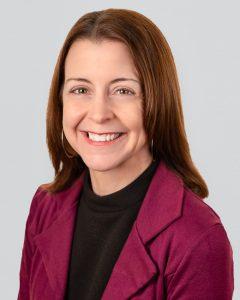
Suzanne Bouffard is senior vice president of communications and publications at Learning Forward. She is the editor of The Learning Professional, Learning Forward’s flagship publication. She also contributes to the Learning Forward blog and webinars. With a background in child development, she has a passion for making research and best practices accessible to educators, policymakers, and families. She has written for many national publications including The New York Times and the Atlantic, and previously worked as a writer and researcher at the Harvard Graduate School of Education. She has a Ph.D. in developmental psychology from Duke University and a B.A. from Wesleyan University. She loves working with authors to help them develop their ideas and voices for publication.
Categories: Collaboration, Social & emotional learning
Recent Issues
BUILDING BRIDGES
December 2024
Students benefit when educators bridge the continuum of professional...
CURRICULUM-BASED PROFESSIONAL LEARNING
October 2024
High-quality curriculum requires skilled educators to put it into...
LEARNING TO PIVOT
August 2024
Sometimes new information and situations call for major change. This issue...
GLOBAL PERSPECTIVES
June 2024
What does professional learning look like around the world? This issue...
